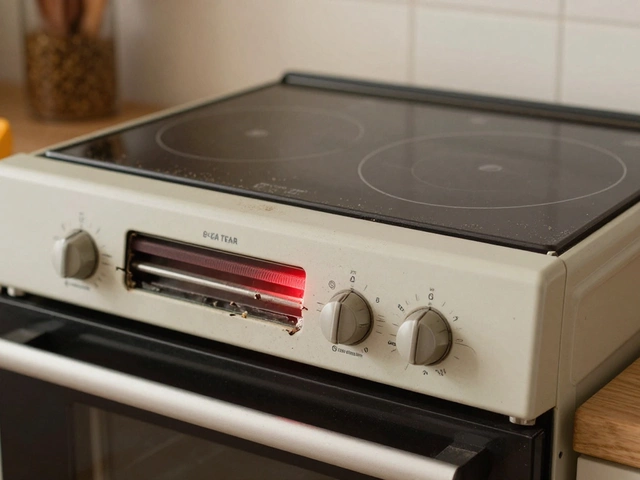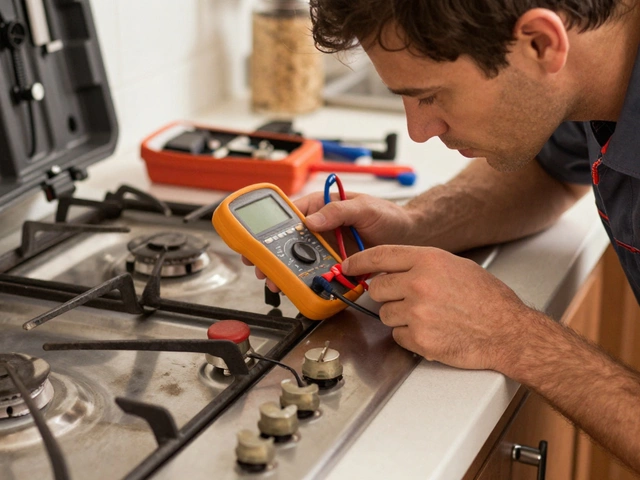Gas Hob Tips: Keep Your Cooktop Safe and Efficient
When working with Gas hob, a cooking surface that uses gas burners to produce flame for heating pots and pans. Also known as a gas cooktop, it sits at the heart of most kitchens and requires regular care. Gas safety, the set of practices that prevent leaks, carbon‑monoxide exposure, and fire hazards is tightly linked to how you treat the hob. Likewise, Appliance repair, professional service that restores a faulty device to working order often becomes necessary when routine upkeep isn’t enough. Finally, a Cooking hob, any flat cooking surface, gas‑ or electric‑powered, that supports everyday meal prep shares many maintenance principles, but the gas version has unique flame‑related quirks. Together these concepts form the core of every useful gas hob tips guide.
Why Regular Maintenance Matters
Every time you light a burner, you’re trusting a tiny valve, a spark electrode, and a flame to work in harmony. If you skip cleaning, grease builds up on the burner ports, causing uneven flames and reduced heat output. That in turn forces the hob to work harder, which can shorten its lifespan and raise your gas bill. A clean hob also reduces the risk of flame‑out incidents, a direct Gas safety concern, because an unexpected loss of flame can lead to unburned gas accumulating in the kitchen. Simple steps—removing grates, soaking them in warm soapy water, and using a non‑abrasive brush to clear the ports—keep heat distribution even and flames blue, the sign of optimal combustion.
Another key tip is to check the flame colour and height regularly. A yellow or sputtering flame often signals incomplete combustion, which may be caused by a clogged burner, a weak spark, or an incorrect gas‑air mixture. Adjust the air‑shutter (usually a small screw near the burner) until the flame turns steady blue. If adjustment doesn’t help, the spark electrode might be dirty or misaligned; gently clean it with a soft cloth and ensure it’s correctly positioned. These tweaks not only improve performance but also cut down on carbon‑monoxide production, a serious Gas safety issue that can affect health if the hob is poorly tuned.
Don’t forget the seals around the control knobs. Over time, heat can shrink rubber or silicone seals, leading to gas leaks when you turn a burner on. A quick visual inspection—looking for cracks or dried-out material—can catch problems before they become hazardous. If a seal appears compromised, replace it with the manufacturer’s part; most are inexpensive and fit without professional help. However, if you ever smell gas after tightening a knob, shut off the supply, ventilate the area, and call a qualified Appliance repair technician trained to locate and fix gas leaks safely.
Keeping the surrounding area clear also matters. Store flammable items—like paper towels, cleaning sprays, and oil—away from the hob. A stray cloth catching fire because of an unattended flame is a common kitchen accident. By maintaining a tidy workspace, you reduce the chance of fire, protect the hob’s finish, and make cleaning easier after each cooking session.
Even with diligent care, hobs develop faults. Common issues include a burner that won’t ignite, a spark that misfires, or a knob that feels loose. When a burner refuses to light, first verify that the gas supply valve is fully open and that the safety cap (if present) is removed. Then, listen for a clicking sound from the spark electrode; if you hear it, the problem is likely fuel‑related—check for blockages or a depleted gas cylinder. If there’s no click, the electrode may be faulty and need replacement. Loose knobs often stem from stripped screw threads; tightening them with a screwdriver usually resolves the issue, but persistent wobble might require a new control lever.
Understanding when to replace versus repair a hob can save money. If multiple burners are failing, the internal gas manifold may be corroded, making a full replacement more cost‑effective. Conversely, a single busted burner or a broken igniter can be fixed for a fraction of the price of a new stove. Your decision should weigh the age of the unit, the cost of parts, and the potential energy savings from a newer, more efficient model. Modern gas hobs often feature sealed burners that burn cleaner and last longer, offering a compelling reason to upgrade if your current hob is over a decade old.
All these points tie back to the core idea that a well‑maintained gas hob is safer, more efficient, and cheaper to run. Below you’ll find a hand‑picked selection of articles that dive deeper into each of these topics—everything from DIY cleaning guides to professional repair cost breakdowns. Whether you’re looking for quick fixes, detailed troubleshooting steps, or advice on when to call Warwick Appliance Fixers, the collection has you covered.


